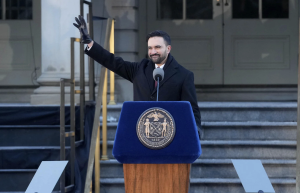Fossils discovered in a flooded cave in the Bahamas revealed the history of humans' devastating effect on wildlife.
The findings shed light on the threat humans pose to the future of island biodiversity, the University of Florida reported. Out of the almost 100 fossil species looked at in the study, 39 no longer exist on Great Abaco Island. Out of these missing species, 17 species of birds are believed to have fallen victim to climate change and rising sea levels at the end of the last ice age, but 22 other species survived this event and instead perished when humans first arrived on the island 1,000 years ago.
"What we see today is just a small snapshot of how species have existed for millions of years. The species that existed on Abaco up until people arrived were survivors. They withstood a variety of environmental changes, but some could not adapt quickly or drastically enough to what happened when people showed up," said Dave Steadman, ornithology curator at the Florida Museum of Natural History on the UF campus. "So, there must be different mechanisms driving these two types of extinctions. What is it about people that so many island species could not adapt to? That's what we want to find out."
At the end of the last ice age changes in climate and related phenomena caused islands such as Abaco to get smaller, leading to smaller populations of certain species and forcing them to interbreed. This event was still easier to survive than hunting and wildfires imposed by humans centuries later. The findings demonstrate how quickly humans can change natural environments
"When humans change habitats at a rate that local species cannot keep up with, that can very quickly result in the losses," Singleton said. "Likewise, even small climate changes can affect migration and significantly impact habitats. So, you can have the perfect storm where climate and human-driven changes are occurring at the same time, like we're seeing in places around the world today."
© 2026 HNGN, All rights reserved. Do not reproduce without permission.








